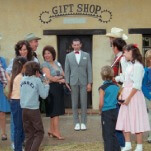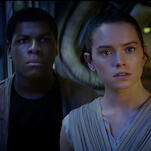Breathe easy, smoke clean: The heyday and the last days of the cigarette commercial

I spent the first seven years of my life wreathed in smoke. My father was a three-pack-a-day guy before he had his first heart attack, at which point he gave up cigarettes for good. Meanwhile, I grew up as part of the first generation that heard almost unequivocally from birth that smoking was terrible. Cigarette ads were removed from television when I was just 3 months old, and even during my dad’s smoking years, he warned against following in his footsteps. The only pro-smoking advocacy I experienced as a kid came from magazine ads and movies—both of which made smoking look alternately fashionable and rugged—and from my friends who smoked. I never picked up the habit myself, but if cigarette commercials had still been around when I was a teen, and marketers had wanted to appeal to me, all they’d have had to do was show a group of kids hanging out in the park, smoking and talking about whether Hüsker Dü had sold out. If they could’ve found a way to include a light whiff of tobacco carried on a spring breeze, that might’ve hooked me.
Last week, I received a DVD containing almost an hour and a half of old cigarette commercials, mostly from the ’60s and for a variety of brands: Raleigh, Marlboro, Viceroy, Camel, and more. (The disc is called Smokin’: Classic Cigarette Commercials, released by S’More Entertainment.) The advertisers back then had something different in mind than capturing the imaginations of surly teens. These spots come primarily from an age when smoking was the norm, and advertising was geared toward winning brand-loyalty. There’s only the faintest acknowledgement here of the medical reports and anti-smoking crusaders that were beginning to shake up the industry; any portents of doom come mainly via the persistent emphasis on the wholesomeness of cigarettes.
That trend’s in evidence in the Raleigh ads on Smokin’, which spend as much time talking up Raleigh’s green-stamp-like “coupon” program—where consumers traded in proof-of-purchase tags for merchandise—as they do hailing Raleigh’s amazing taste. Then there are Raleigh’s Bel-Air ads, which show clean-looking young folks frolicking by the sea, enjoying toxin-free smoke thanks to Bel-Air’s recessed filter. Other ads emphasize flavor or package design, while some bring in medical experts to reassure consumers about the product, and some forgo all outsized claims and just dazzle the viewer with special effects and glamour. (Fashion models! Dancing cigarettes! Beach bunnies hopping out of your TV to share their Newports!)
I find these ads fascinating in part due to the incongruity between familiar TV advertising techniques and the product being sold. These commercials are not all that different from the cola and household-cleaner spots I grew up with, except that the happy-looking spokesfolk here are brandishing cigarettes instead of 7-Up. They’re also striking to me because they represent two significant phenomena: the power of the media, and the speed with which conventional wisdom can change. There’s a sense of cultural reassurance to advertising; it normalizes a product or service, making it seem more legitimate. (Consider the Girls Gone Wild series, which became the mainstream standard for skeevy softcore strictly by virtue of being on TV all the time.) Without the backing of television, it was all the easier for the perception of smoking to shift from “part of everyday life” to “something that juvenile delinquents and nicotine addicts do.”


![HBO teases new Euphoria, Larry David, and much more in 2026 sizzle reel [Updated]](https://img.pastemagazine.com/wp-content/avuploads/2025/12/12100344/MixCollage-12-Dec-2025-09-56-AM-9137.jpg)





































